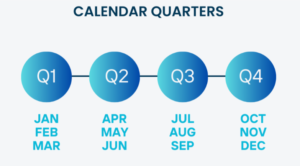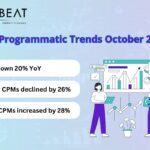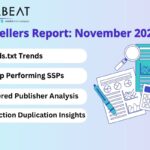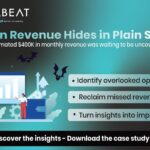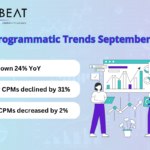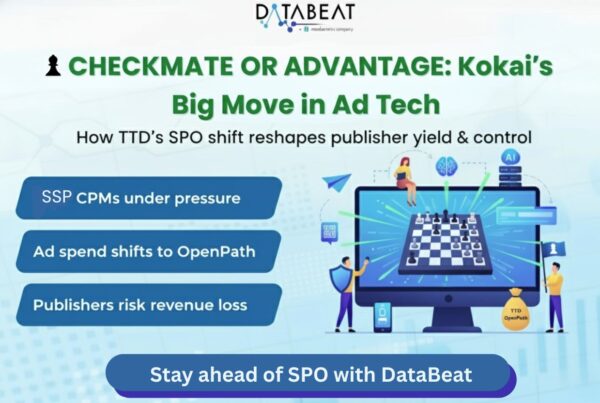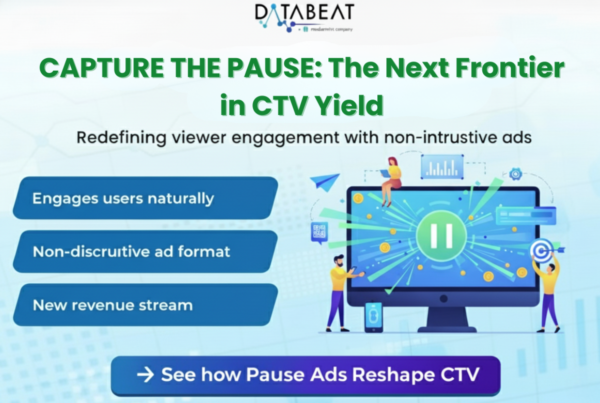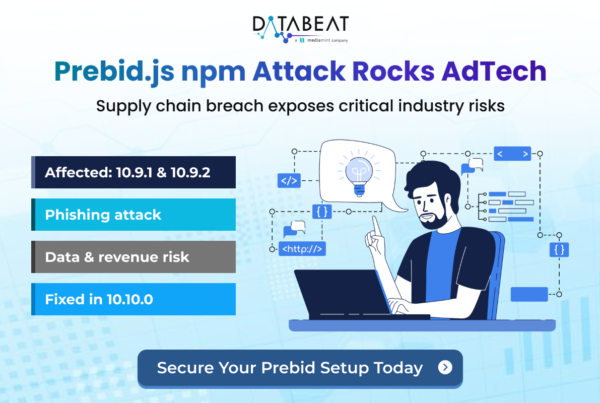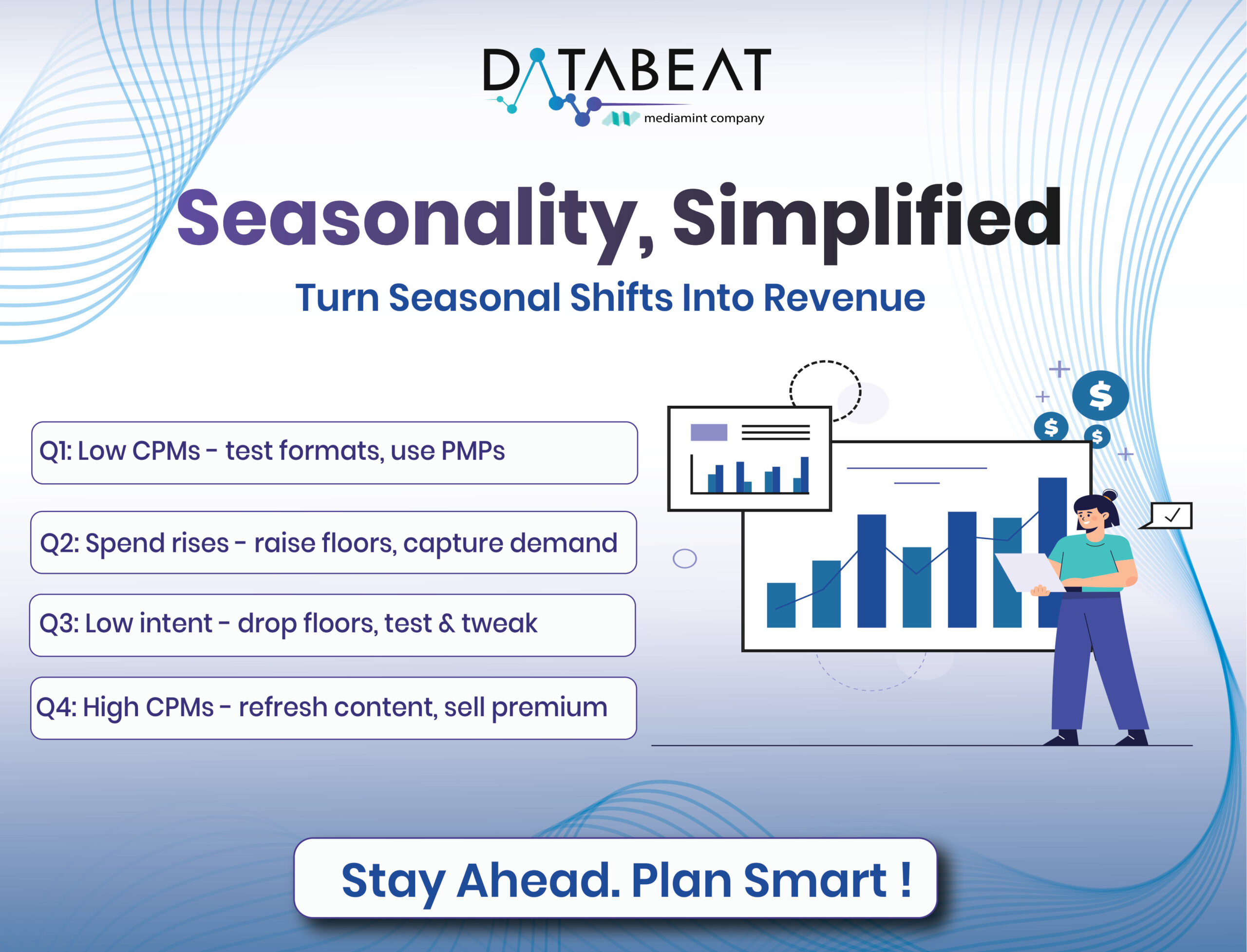
Each day, people experience thousands of events, some predictable, others totally unexpected. Likewise, the ad tech environment has a whole series of changes over the course of the year with many developments arising without notice.
Seasonality is periodic trends, patterns, or fluctuations that occur regularly during the same period every year. The seasonal opportunities tend to rely, to some degree, on your target audience and their actions at given times.
As per Google – Seasonality is any predictable fluctuation or pattern that occurs during the same weeks each year
Seasonal Trends:
- Trends can be referred to as commercial or calendar events that happen every year.
- 1 Year has 4 quarters as you can see here
In general, seasonality can be divided into three categories:
- Cultural holidays (such as Christmas, New Year’s, and Easter)
- Commercials (like Cyber Monday, Black Friday, and Singles’ Day)
- Ad-hoc events (e.g., International or national games, President Elections, Olympic Games & etc)
In several orthodox countries like Moldova and Romania, Christmas is celebrated in early January. Instead of December, Chinese New Year is observed in February. Therefore, by examining the sources of your website traffic, you can prolong this season.
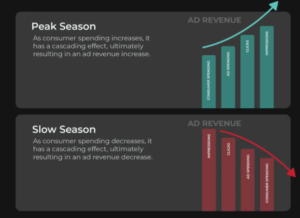
Q1:
- Generally referred as “January slump”
- Spending less on advertising campaigns may result from advertisers concentrating on year-round preparation.
- It is reasonable to anticipate a sharp decline in consumer purchase patterns once the post-holiday season begins, which will lower consumer engagement.
- For publishers, Q1 is undoubtedly difficult in terms of generating money.
- Reduction in ad spending by advertisers will show decline in sales. A surplus of ad inventory will result in drop in effective CPMs (eCPM)
Optimizations:
- Optimizing inventory: Publishers may better connect and comprehend users by experimenting with various ad formats, ad units, and placements.
- Employing innovative ad layouts can add value to the existing inventory
- Spend more time on creating engaging content & bringing traffic to your website in this month
- Opting for PMP deals can be a good choice in this period as programmatic auctions may not give much yield
- Can experiment in adjusting CPM floors
- Valentine’s Day and the Super Bowl are two occasions that should be used to increase sales.
Q2:
- Spending shift that is significantly beneficial for publishers
- After laying out their plans, advertisers will now actively set aside funds for different initiatives.
- Higher ad spending is advantageous to publishers, Ad engagement and placements.
- Publishers can see a huge hike in revenue from ads.
- Businesses want to spend down their budgets as the fiscal year comes to an end in Q2, so there will probably be a rush of last-minute spending to make sure the money is used wisely, which will increase advertising activity.
Optimizations:
- After observing a rise in traffic and interaction, publishers might slightly raise the floor cost.
Q3:
- Q3 also witnesses a significant dip in publisher revenue due to change in consumer behaviour & advertiser spending
- During the third quarter, people spend more time outside, which boosts internet interaction.
- Dip in user engagement – Re-evaluation of budgets by advertisers
Optimizations:
- Publishers can start Q3 by slightly lowering the inventory floor price to encourage ads, reevaluate, and then possibly raise it in the middle of the quarter. For publishers to find the best balance between revenue and fill rates, floor prices must be continuously readjusted and adjusted.
- In order to determine and finalize ad formats, placements, and units that best connect with the audience and contribute to the highest possible revenue generation, publishers must also use Q3 as a testing ground.
Q4:
The final quarter
- During this phase, we can observe a rise in advertising activity over the Christmas and holiday season.
- Companies understand how important it is to be visible during this time of high user engagement.
- As a result, they spend large sums of money on ostentatious advertising campaigns in an effort to draw in a large internet audience.
- CPM rate spike in Q4 will stay for a long period over winter before Christmas & New year. During this time, marketers will look for premium ad inventory to reach their appropriate target audience which will help publishers optimize their revenue.
Optimizations:
- In order to draw users and guarantee the delivery of relevant and interesting material, publishers must first keep in mind the variety of holidays and events that fall within this quarter.
Pros to Publishers:
- Increased traffic to their websites
- Increased CPMs
- Can optimize trends to increase revenue
Cons of Sales:
- Some brands boycott Black Friday to protest against consumerism
- Publishers will experience a drop in CPMs at the start of a quarter & hike in CPMs at the end which will cause fluctuations in revenue patterns.
How to Sail through the Seasonality Wave?
- Strategic planning
- Data driven insights
- Campaign adaptations to the changing consumer behaviors
- Adaptation to market dynamics
Things to do to Prepare your Website for Holiday Seasons
- Implement an exciting & engaging user experience (UX) on your website
- If Google thinks that your page provides a poor user experience, it can rank your websites poorly
- An easy, user & mobile- friendly website will be a good choice to go with
- Enabling ad refresh
- Users are generally inclined to spend more time online before the winter holidays, so publishers can make use of that to generate extra revenue from refresh ads.
- Having more monetization solutions like header bidding,
- Generally during Q4, the website’s traffic will increase. Bid density will rise as the publisher’s ad inventory becomes more appealing to premium advertisers.
- Upgrading your website’s existing content:
- All the search engines prioritizes new, updated & fresh content which helps the websites to rank higher, therefore updating your existing content is a must to do exercise
- In addition to these, making your website interface easy, clean & consistent helps your website to attract more users. This includes:
- Practicing on-page SEO in optimal ways will benefit
- writing SEO-friendly titles, subheadings, and meta descriptions
- structuring content around user intent
- Having best performing ad formats
- Interstitial ads have higher CPMs compared to standard or regular ad formats, like display or banner ads.
- Improving website load speed
- An ideal web page should typically load in less than two seconds. This is especially important for mobile devices, whose traffic share is above 55% according to global traffic data for 2024.
How can DataBeat help Here?
DataBeat can provide enormous support with its seasoned expertise & knowledge. It can draft an year long seasonality sail through strategic plans tailor-made for different players. DataBeat can support publishers to understand the nuances of seasonality in the programmatic landscape & help to optimize the revenue streams throughout the year. DataBeat fine-tunes the revenue strategies & provides optimizations to revenue generating techniques. By following our insights and implementing a proactive approach that aligns with the ebb and flow of the seasonality, publishers can steer their revenue up effortlessly and sustainably.

